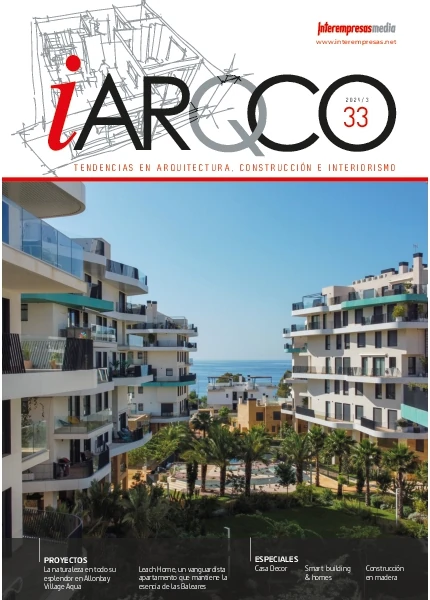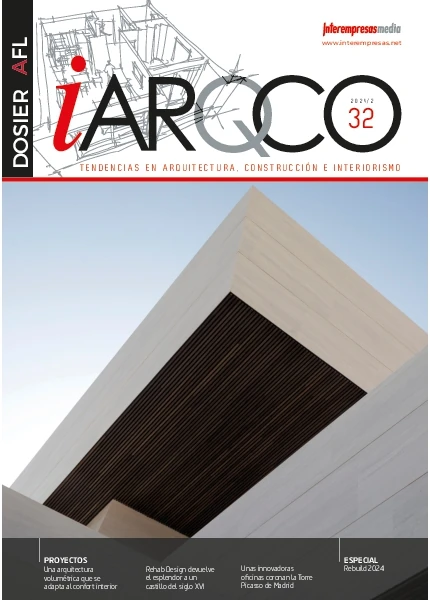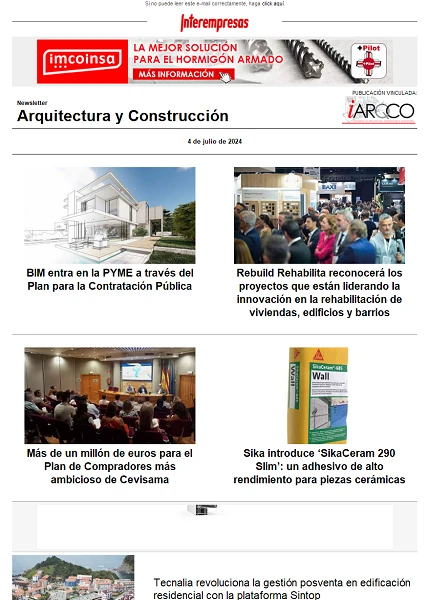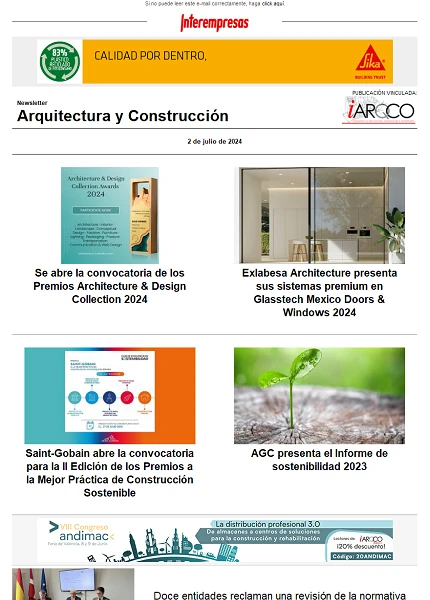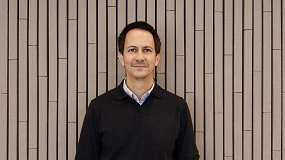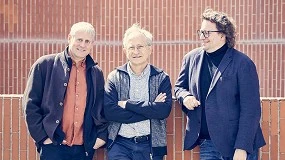Interview to Alberto Coloma, manager of the Foundation The House That Saves
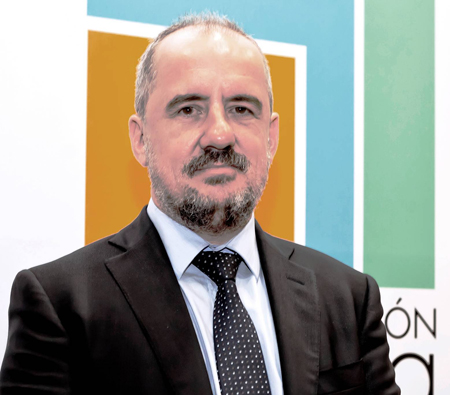
Which balance does of the first steps given by The Foundation The House that Saves? How it is being received this initiative in the sector of the Construction?
The balance of this first period of life of the Foundation is very positive. Doing an analysis of the initiatives that have llevar during this period, practically all have had a notable repercussion mediática, social or professional. The sector of the Construction in our country is suffering, as all know, an enormously complicated situation and has to develop a new model of business that was compatible with the exigencias of sustainability that sues nowadays the society and the commitments that purchase like country member of the EU. And it has to do it besides in the middle of a coyuntura economic tremendously difficult. In this sense, initiatives as ours, that look for the information and awareness of the citizens so that also they sue this new model, understand , in general, in the sector like a support.
It appreciates in the society, and in the professionals of the Construction in particular, an every time greater interest by the energetic efficiency in the edificación?
Think that few times has been able to find in the sector a greater consensus that the one who has articulated around the importance of the energetic efficiency in edificación.
Treats with hygiene of one of the most important bets that can do a country by the economic saving, the energetic independence, the respect to the environingingment and the generation of employment. And to these profits, and of specific form in our country, adds today a problematic social that begins to be very worrisome; the increase of the number of homes that declare in situation of energetic poverty, that is to say, that can not pay the power that need to keep his house in some conditions of confort thermal sensors mínimamente healthy.
If all the previous was not sufficient, still would remain us the obligation that have to range us with the rest of European countries on the way to an edificación more sustainable, implementing the Directives on energetic efficiency that the EU comes approving from 2002 until the recent of October 2012 that establishes ambitious aims in matter of energetic rehabilitation.
It considers that the economic crisis in which we see us immersed can ‘favour' this bet by the efficiency, by what supposes in economic saving?
Definitely the possibility of generation of economic saving is one of the fundamental factors that can encourage performances of improvement of the energetic efficiency of our buildings. But in this point suits to remember that, of the roughly 10 million buildings that have, near of 80% have more than 30 years and are therefore, previous to the first rules that regulated the need to isolate our constructions, the Basic Norms of Edificación of 1979. Of this form, the improvement of the efficiency of our park edificatorio raisin necessarily for taking part in these predatory buildings of power. And, although the economic saving that can generate to level country is enormous, does not have to us do forget that it is not the only profit to achieve but, as we commented, treats in addition to a need imperiosa from the environingingmental punto and also social, by what evaluate the interest to promote massive performances of rehabilitation only by the profit that can generate in terms of economic saving is slanted and can carry even to act like brake of the same.
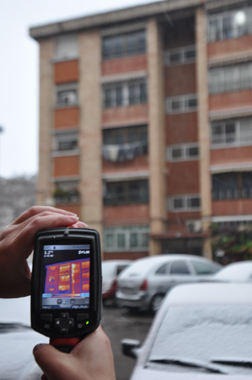
It is today, therefore, the rehabilitation the main field of performance in energetic efficiency, habida explains of the fall experienced in our country by the new edificación?
Definitely is it by the commented previously; have 25 million houses in this country and are building less than 100.000 new houses to the year, with what the energetic impact it is necessary to look for it definitely in the park already edificado. Now well, it would not have felt to be ambitious in the rehabilitation of these already built buildings and not to be it in what we demand to the new edificaciones. What do not isolate today… will have to rehabilitate it morning. We expect and we trust that the new Technical Code of Edificación, that would have to see the light in a term of time very brief, was ambitious in this sense.
In which concrete appearances can improve a house built his energetic saving? Which are the main performances that has to tackle a building to improve his efficiency?
Between a 50 and 70% of the power that consumes in a house employs in heating and refrigeration. And more than half of this power is despilfarrando because of the deficient thermal sensors quality of his enclosures, so many faã§ades, covers and floors like windows. Therefore the performances of greater impact from the punto of reduction of the energetic needs of a building happen necessarily for improving the isolation of these elements of the envolvente, with solutions for example of thermal sensors isolation by the outside in faã§ades or replacement of glasses and carpentries by others more efficient.
They have of some report in which it visualise , with concrete data, the saving that would obtain the owner of a house improving his energetic efficiency?
Along this year 2012 have developed, together with the Spanish Federation of Municipalities and Provinces, what have called ‘Program of Energetic Diagnostic of the Habitat Urbano' (PDEHU), that has carried us to realise studies of energetic efficiency in buildings and neighbourhoods of five Spanish cities. In these five places and on request of his city councils, have found us working on a typology of edificación very extended along all the Spanish geography and that shares in a lot of cases common problems of deficient energetic quality. Have so, although the buildings analysed have been, as it is logical, some, the conclusions obtained can apply to a very important part of the park edificado of this country, built in urban cores between the years 60 and 70. We have found that, with interventions in faã§ades, covers and windows like which commented, can achieve reduce the demand of power for heating between a 45 and 65%. In the weeks to come this study will be available for all that that was interested, since the final aim of the same is that the citizens know that through the actions of rehabilitation his houses go to see improved substantially, so much by economic saving as by increase of the welfare.
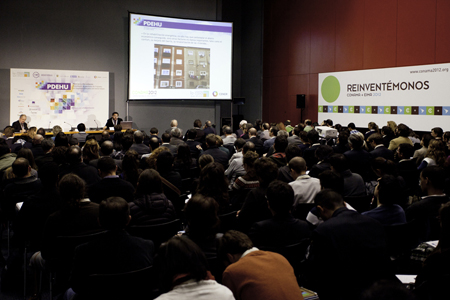
It can then improve also in criteria like the confort and the hygiene acting on the energetic efficiency?
An efficient house energetically no only is more respectful with the environingingment and more economic for his owner in terms of energetic consumption but, especially, is a house much more confortable. To way of example, one of the most important factors of wasteful of power of our houses has to see with defects of estanqueidad in the enclosures, that is to say, with problems of infiltrations of air. And all know the fault of confort associated to these currents of cold air that can colar inoportunamente in our house.
Recently it read that 85% of the commercial deficit of Spain is achacable to the energetic factor, to the import of fuels fossils. I understand that the FLCQA, incidiendo on the energetic efficiency, offers also a high environingingmental commitment.
One of the main aims of the Foundation is the active fight against the climatic change. As it already commented previously one of the reasons by which the energetic efficiency is earning a notable importance in the politics of the European Union, is because of his direct repercussion in the reduction of the broadcasts of gases of effect invernadero. The reduction of the energetic demand of the buildings is one of the keys so that the energetic balance of our country see benefited. The transition of the use of fuels fossils to renewable energies in the sector of the edificación, has to accompany necessarily by measures that guarantee that our houses sue only and exclusively the power that need.
In general lines, what notices would put to the Spanish buildings in energetic efficiency? They committed a lot of abuses during the real-estate boom?
More than 80% of the Spanish buildings are big despilfarradores of power since, as we commented, built under a non-existent legislation or in the best of the precarious cases regarding the needs of isolation. More than abuses, what fits to regret regarding the years of the boom is that we had not had in that moment of a demanding legislation in the matter, as the one who trust avenges prompt of the hand of the new Technical Code of Edificación, since the one who have in force, that dates of 2006, took years in implanting of real and practical form. We think that the new Code would have to reduce to the half the energetic demand of our buildings regarding what demands the current and expect that his application was effective the before possible not to repeat errors of the past.
Which companies form already splits of the Foundation The House That Saves?
The patronato of the Foundation is constituted by his members founders: Isover, Knauf, Knauf Insulation, Placo, Pladur, Rockwool, Saint-Gobain Glass, Ursa and Weber. Have besides like partners collaborators to Alder Venticontrol, Glassolutions, Saint-Gobain Wanner, Kommerling and Real of Piasca.
Which criteria has to fulfil an entity to form part of this project?
In the FLCQA what pursue is to do arrive to all the sectors of the citizenship that a new culture of the edificación is possible. The entities that form part of the Foundation are convinced that the improvement of the energetic efficiency of our buildings is the most important initiative in terms of environingingmental profit, economic and social that can tackle our country. Any company that share this ambition will be definitely welcome.

One of the performances in which more it is doing upsetting the Foundation is the one to attain a greater approach to the city councils to do them see the advantages to bet by the energetic efficiency. Which answer Are finding by part of these administrations?
The fundamental aim of our project is the information and citizen awareness. And the city councils are logically the administration that more near is of these citizens. What Are finding us, first of all, is an enormously positive answer from the Spanish Federation of Municipalities and Provinces. And we find also a lot of city councils that know this problematic and are, with the difficulties of availability of resources that have today all the administrations, treating to activate politics that improve the situation of his park edificatorio and in definite, of the neighbours that do use of the same. Therefore resumiría this answer in two ideas: you win to collaborate and sensitisation to this problematic.
Finally, in which lines of work go to centre in the Foundation during the 2013?
Would like us contribute our small grain of sand to achieve that, definitively, the energetic rehabilitation of the park edificatorio was a reality. We trust for this in continuing with the collaboration initiated with the Femp, because we are convinced that from the city councils can do a big work facilitadora of these performances of rehabilitation. We look forward to to contribute them so many ideas like the capacities of communication that have achieved to develop to date, especially in social networks.
Of form more general, all type of projects of collaboration with the administrations to arrive to the citizens and achieve between all a park edificatorio more respectful with the environingingment, efficient and rational in the use of the power and confortable for his users.


